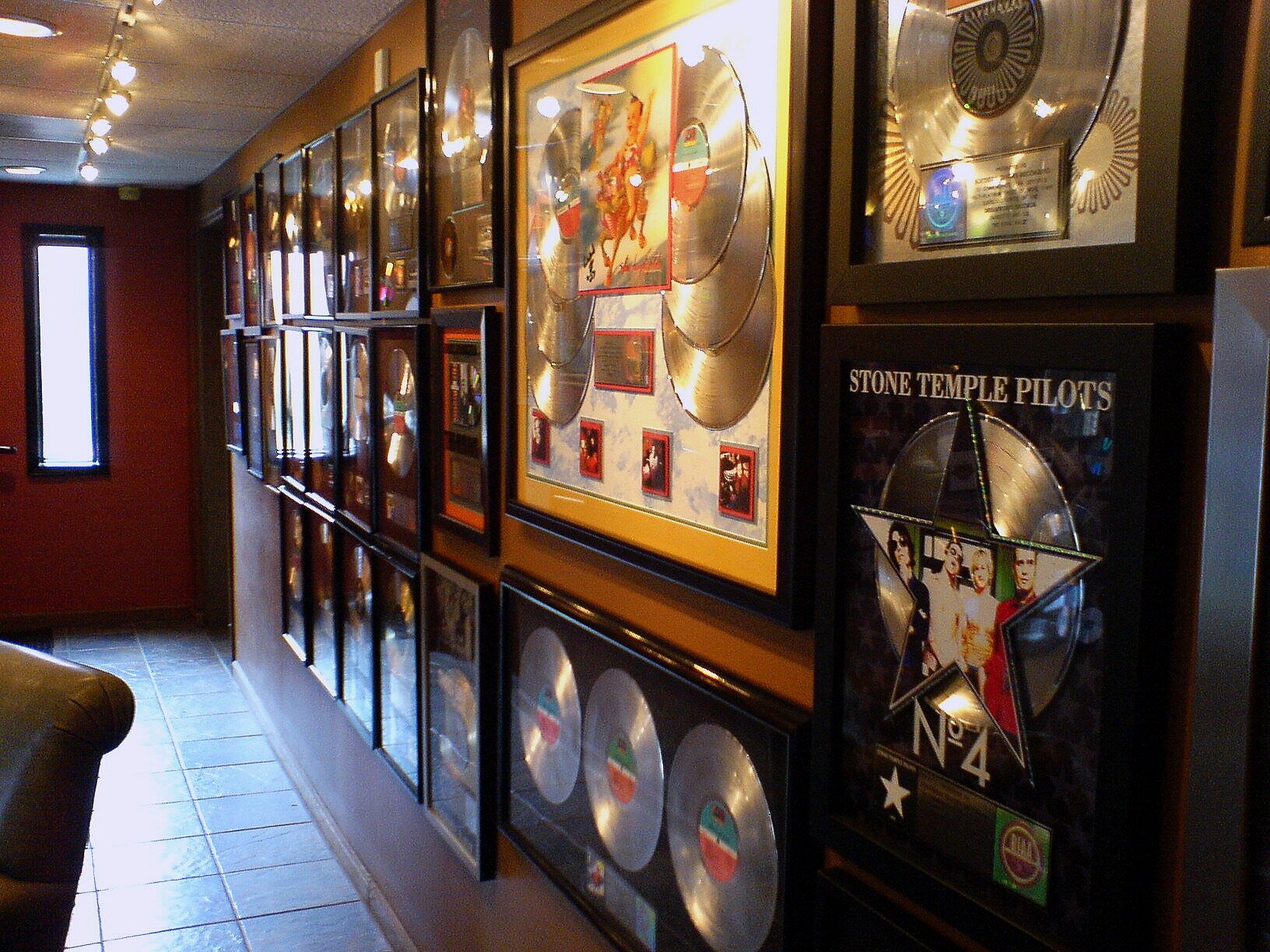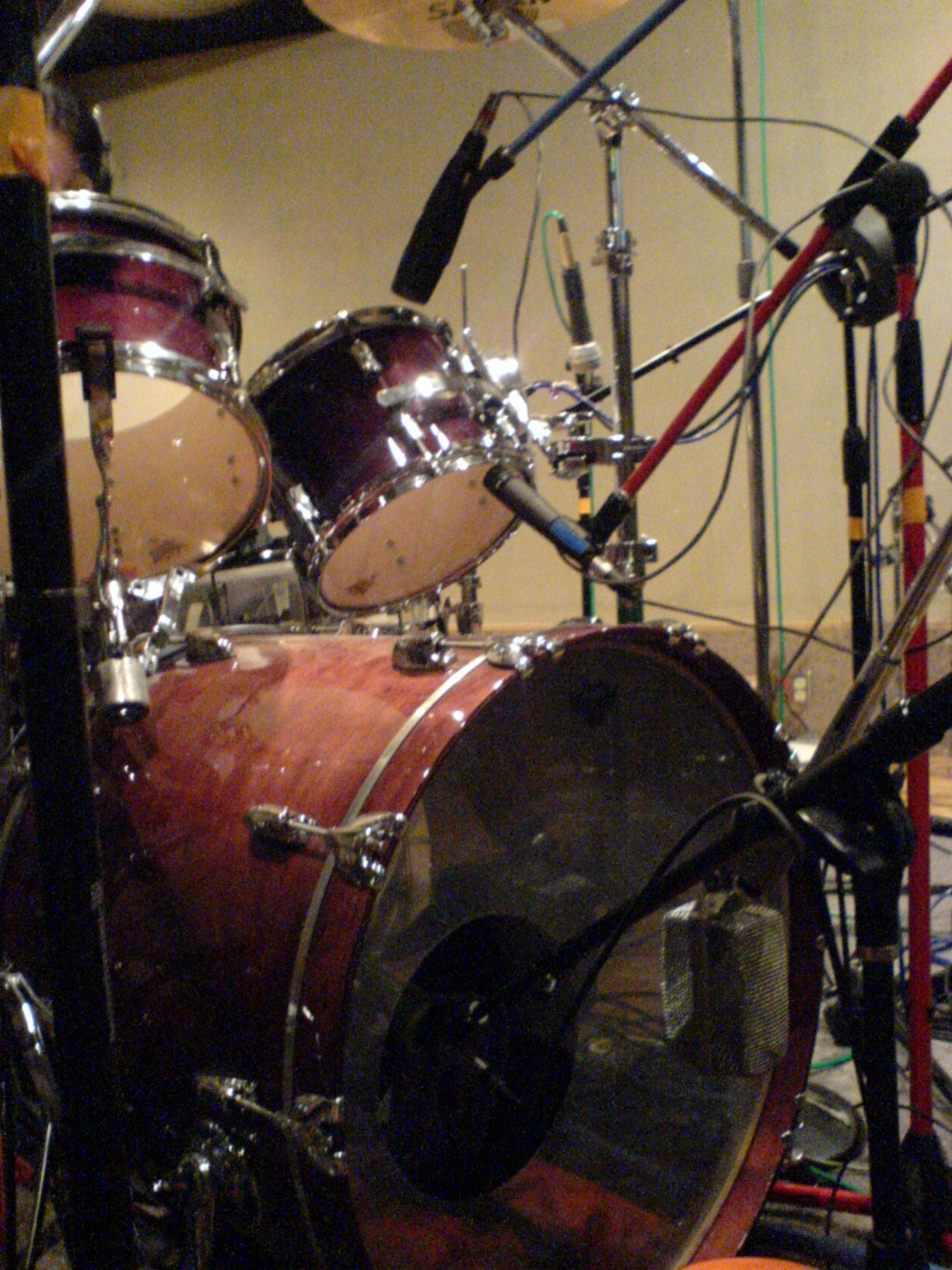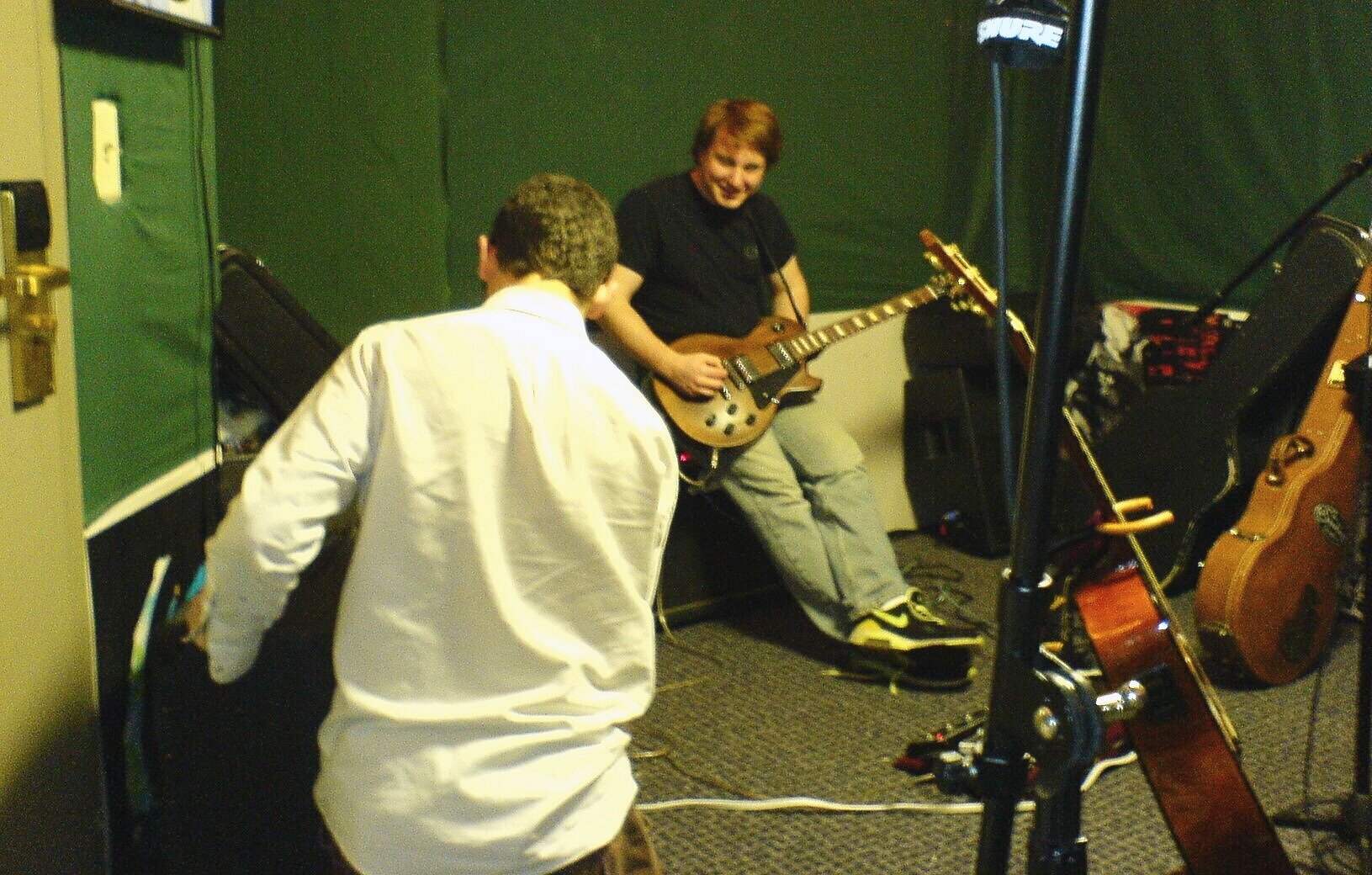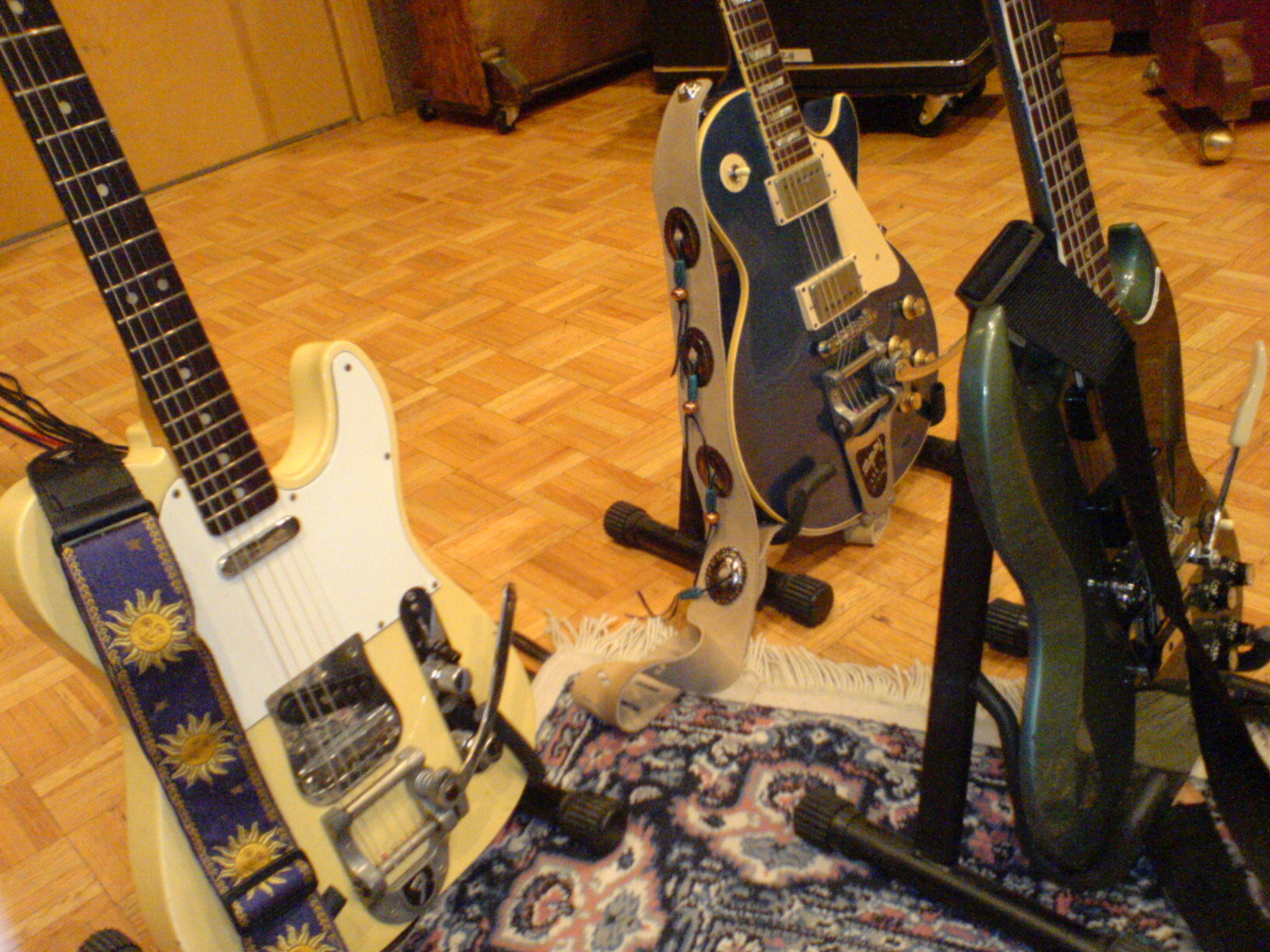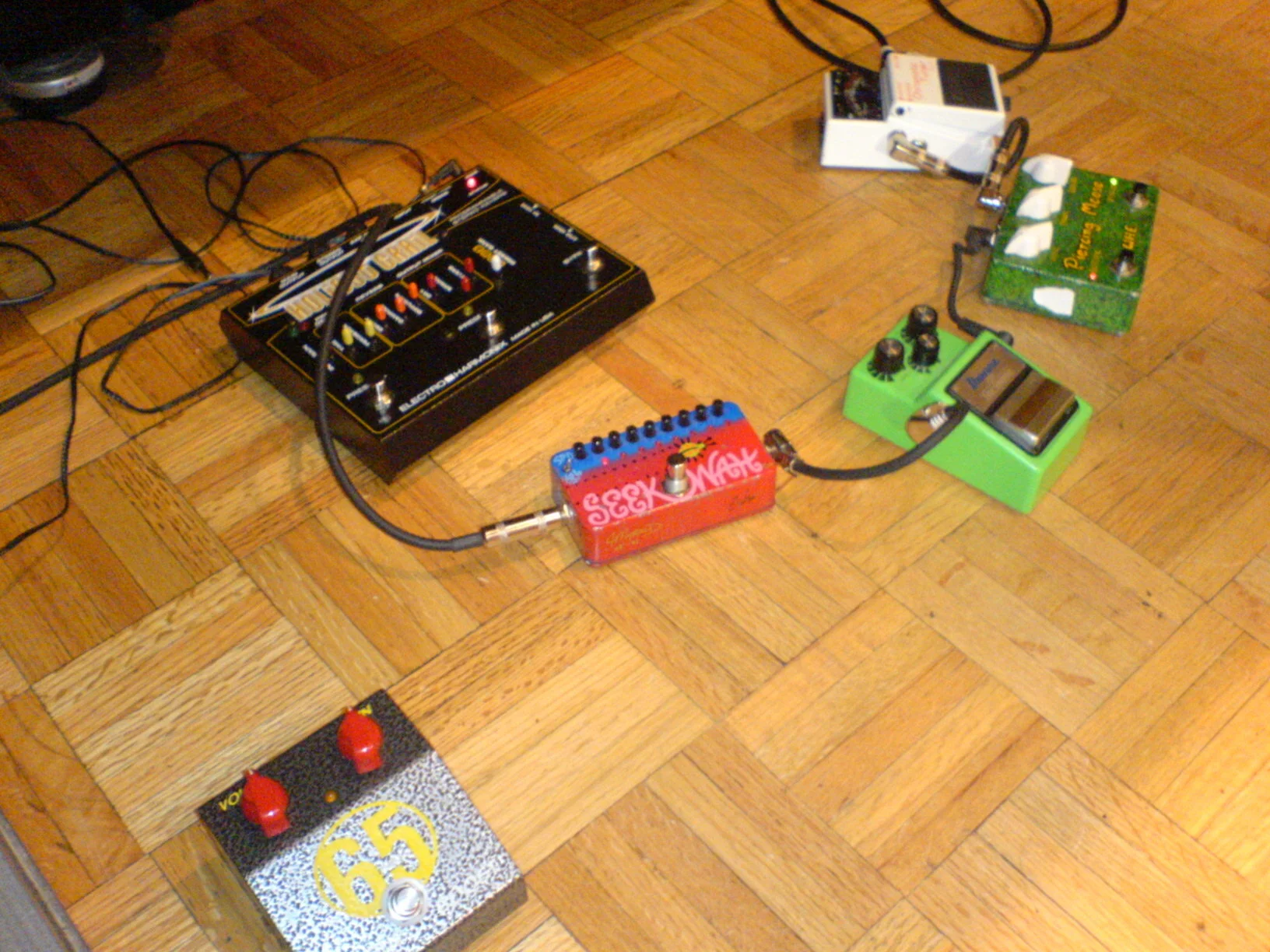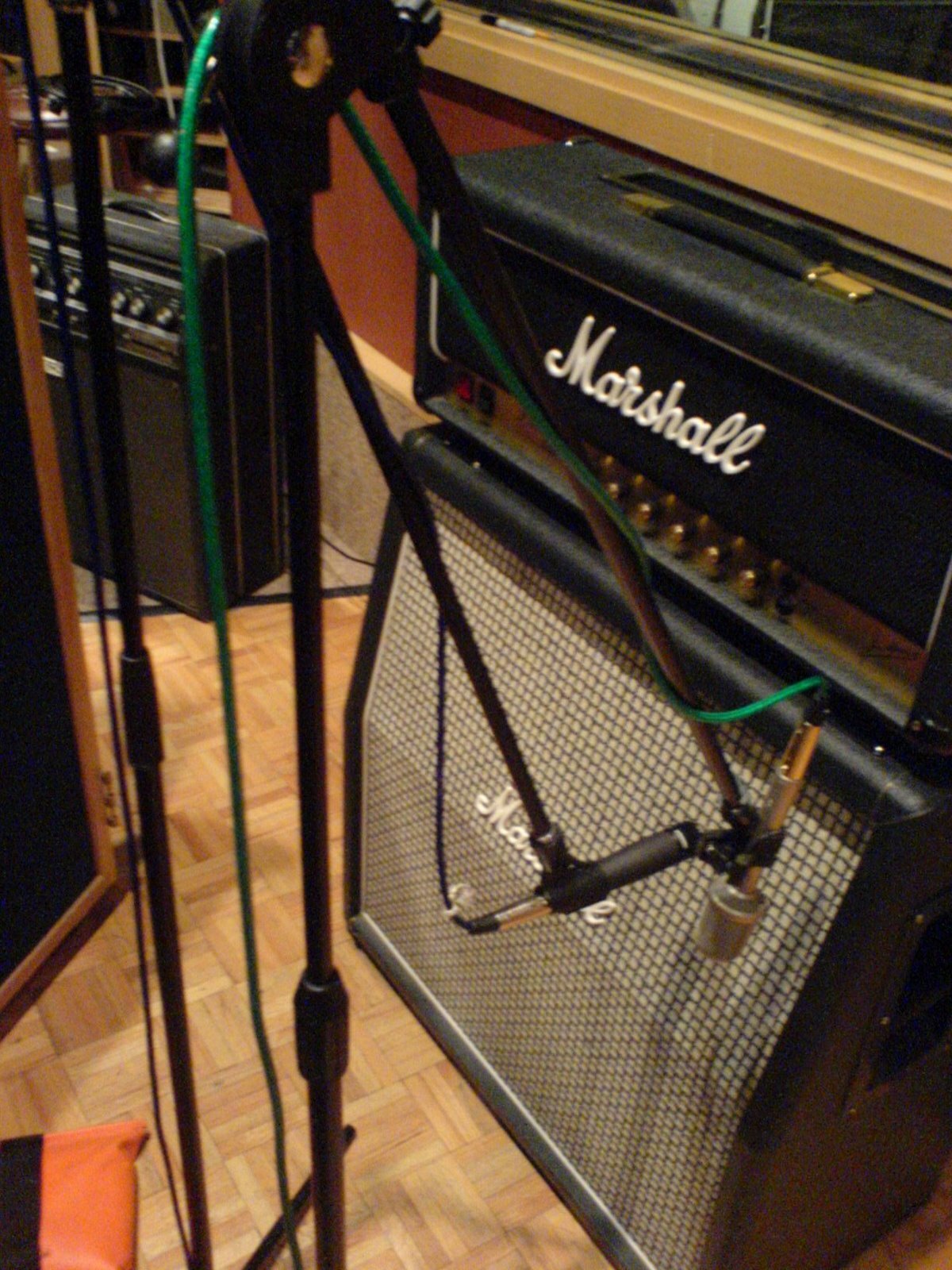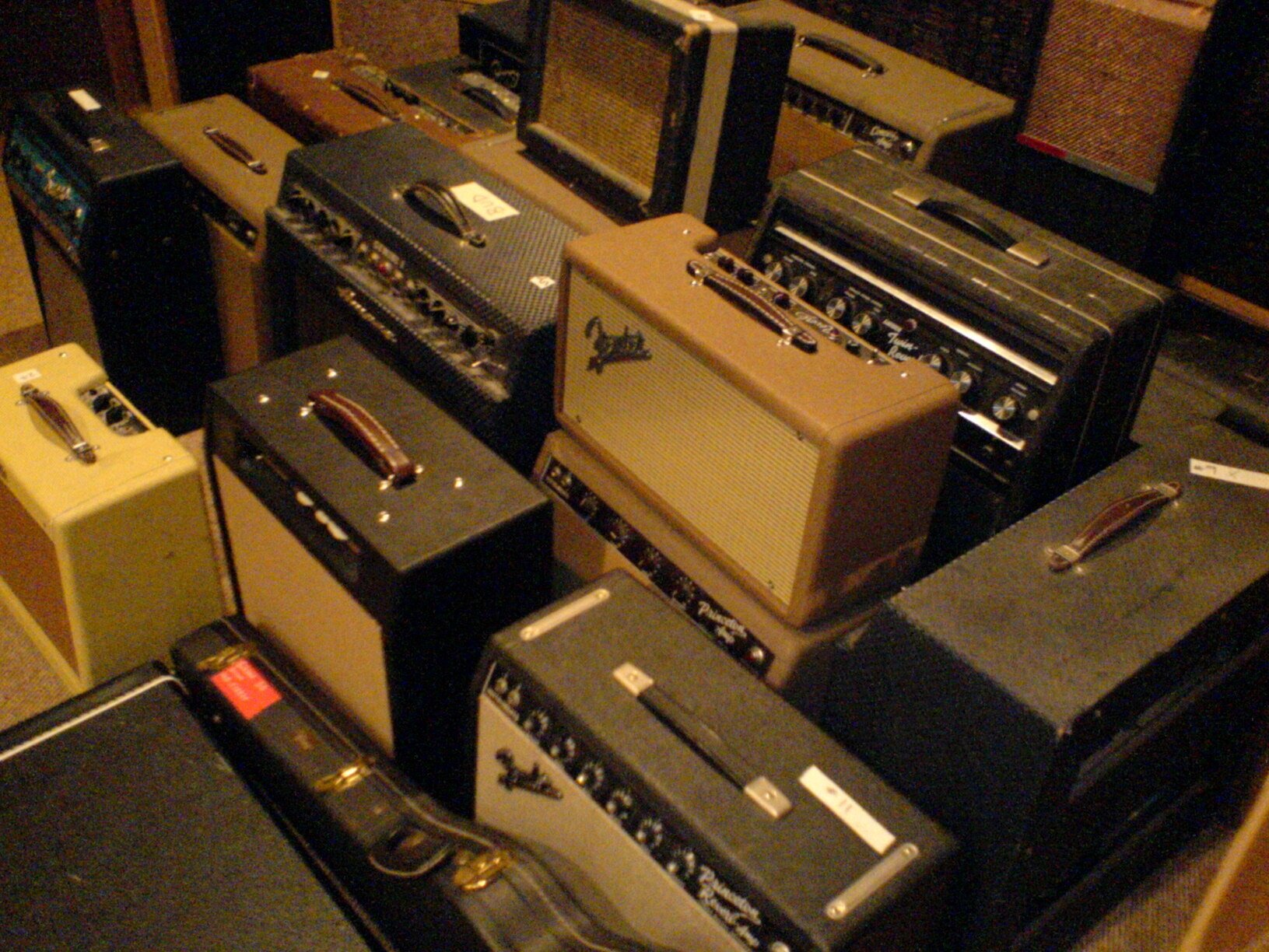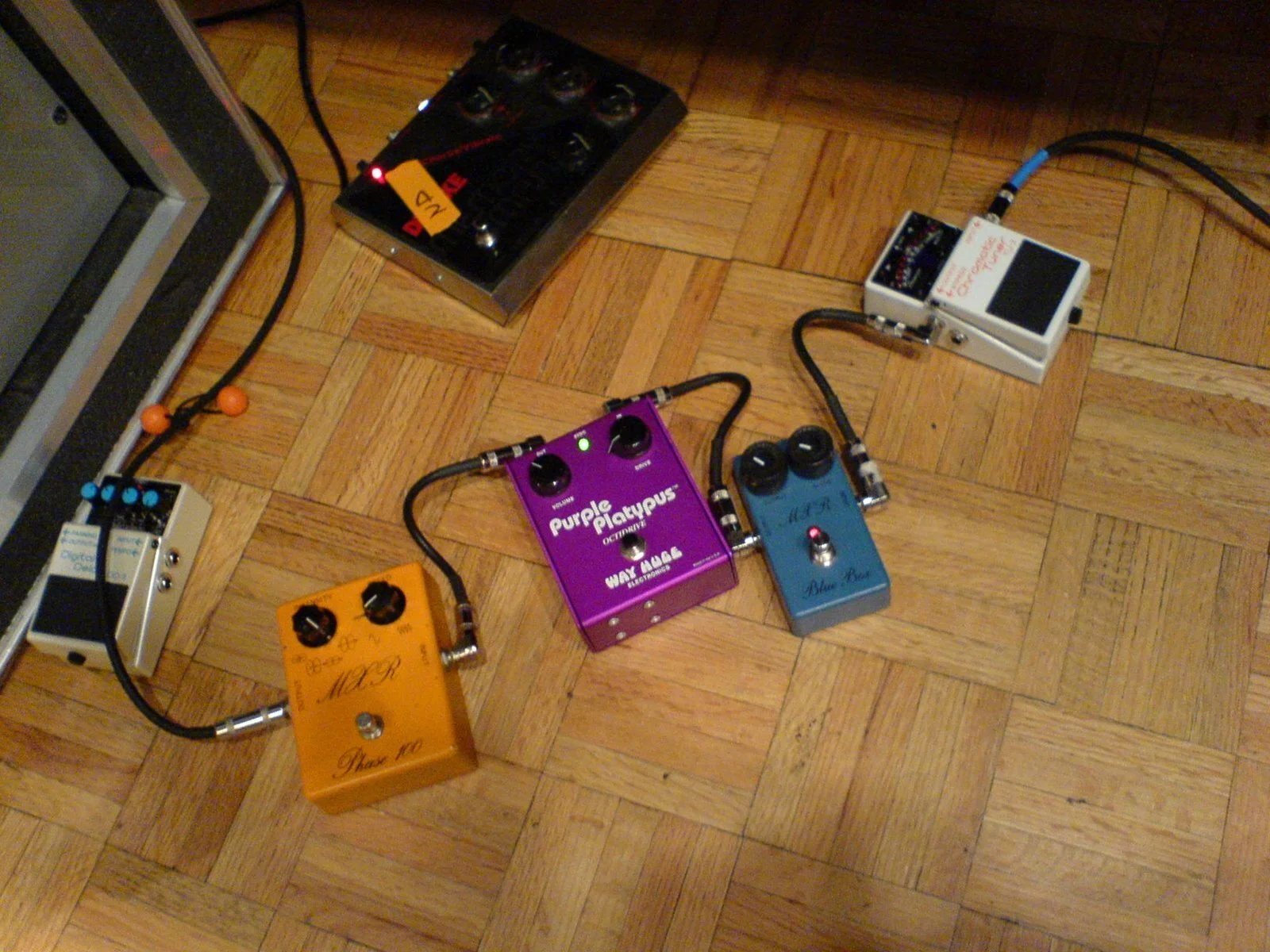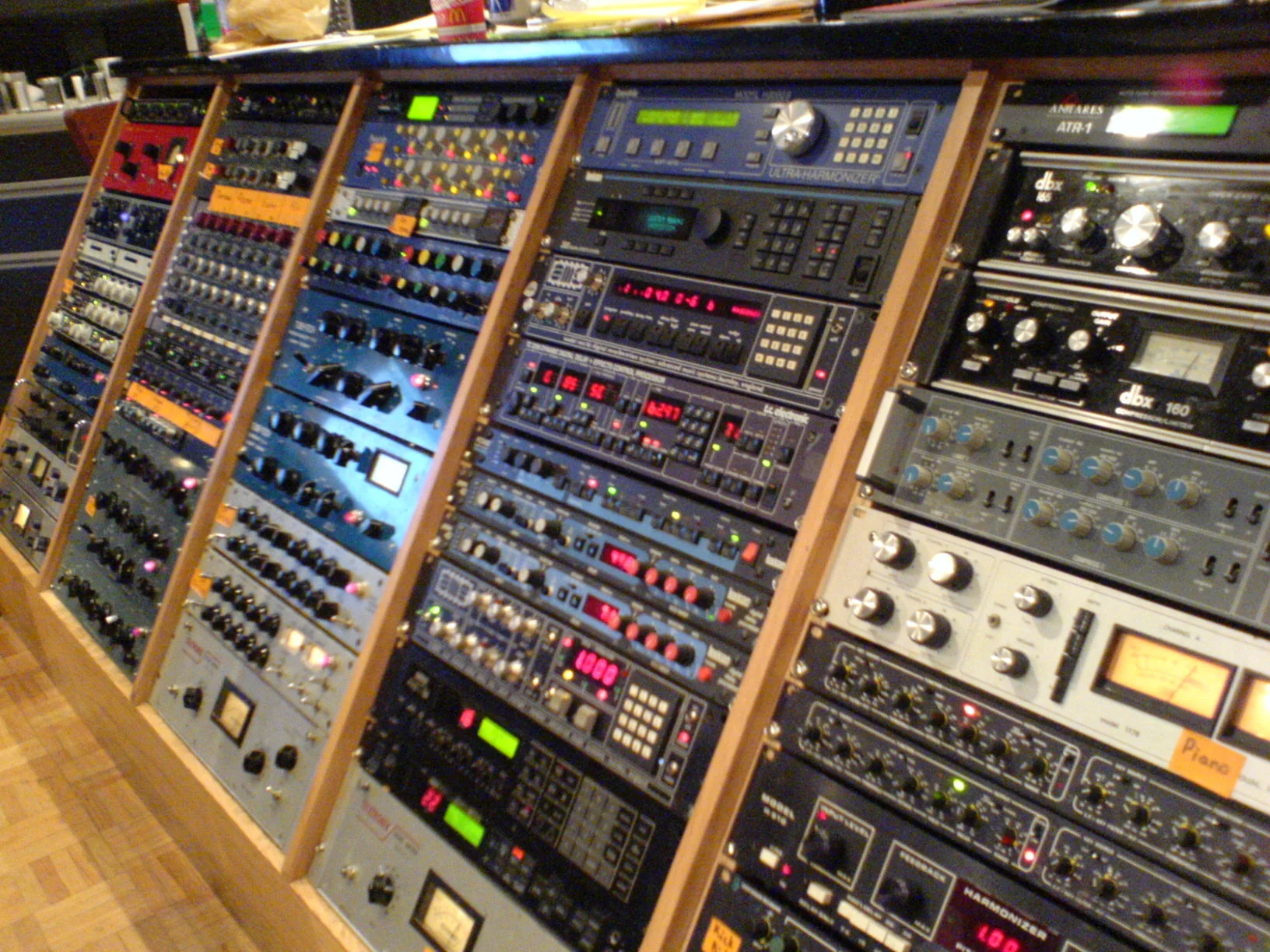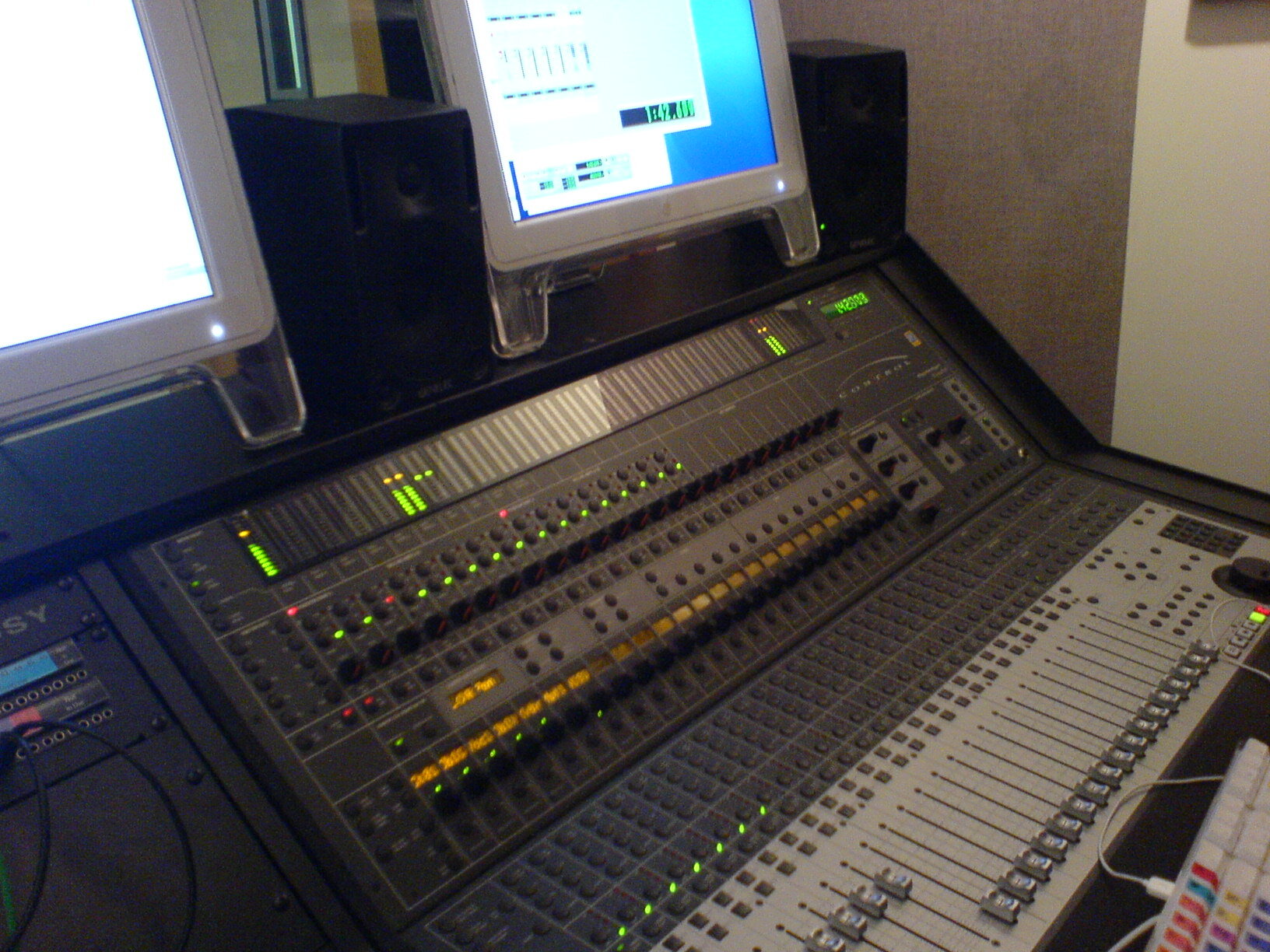In our early twenties the band would lead us to New York in search of kindred spirits, but our first stop after high school graduation was the music school at Georgia State University. Our plan was to divvy up the know-how. I concentrated on studying the "music business" (in a form that was basically obsolete even then) while Steve learned how to produce/engineer our music. His recording classes offered us regular use of the university's recording facilities and helped him land an internship at Southern Tracks Recording.
Between those two studios, we settled on the name Children Having Children and recorded the songs that make up the first EP. There were many all-night sessions in those rooms, eating takeout chicken wings, cramming in an hour or two of sleep on the couches, driving fifteen miles home, and then struggling through a day of classes and jobs. I admit that I have to laugh a bit now as it felt at the time like we were trying to make our Sgt. Pepper's, but I am equally filled with pride that we took it so seriously.
Even though we never had a full band in Atlanta and couldn't play proper shows, we still rehearsed at least three times a week. Although we had spent years practicing in an airforce-base adjacent, spider-infested outdoor storage unit with no climate control (hello winter!), we decided to relocate to a new space to prepare for the sessions and were immediately greeted by new challenges. Housed in a converted warehouse and shared with a friend's industrial band, the new space had absolutely no soundproofing between units. We were surrounded by punk bands and hip hop producers going full blast at all times, which made it difficult (and often miserable) to practice our intricate arrangements without the power of a drummer.
I'd go to school all day, go to practice for up to five hours, get home just before midnight, maybe say hello to my girlfriend, and go to sleep just to do it all again the next day. Sometimes with a part time job thrown into the schedule. This is how seriously we took the band and the preparation for the recording sessions that we hoped would change our lives.
The opportunity to record at Southern Tracks was amazing and will always be one of the coolest things I’ve ever done. We had access to world-class instruments, top-notch equipment, great recording rooms, and a totally professional atmosphere. While I think Steve's songwriting and recording abilities are miles further down the road today, it’s still incredible and informative that we recorded in the same room as so many amazing bands and musicians at that embryonic stage.
A highlight of those sessions and the epic of the EP is “Museums," which still has gravitas today. The heavy distortion at the end of the song is probably the clearest representation of how my musical tastes influenced the record. I'm a big fan of My Bloody Valentine and walls of guitar, so I always loved how the distortion on my bass and the fuzz on the guitars kick in at the song's climax.
When the original version of the EP came back from mastering, Steve and I were both unhappy with the results. We decided to get it remastered and I also convinced Steve to replace two of the songs on the original tracklist with newer recordings that were intended for a future release: “Film” and “This Certainty”.
“Film” was my favorite of our songs at the time and still sounds exciting to me. My vocal part was more prevalent than on our other songs and I love my bass line. The arrangement builds and builds with a guitar solo that Steve meticulously composed. I remember our guitarist Matthew practicing that solo over and over during our rehearsals and when it clicked, I really felt like we were a rock band.










